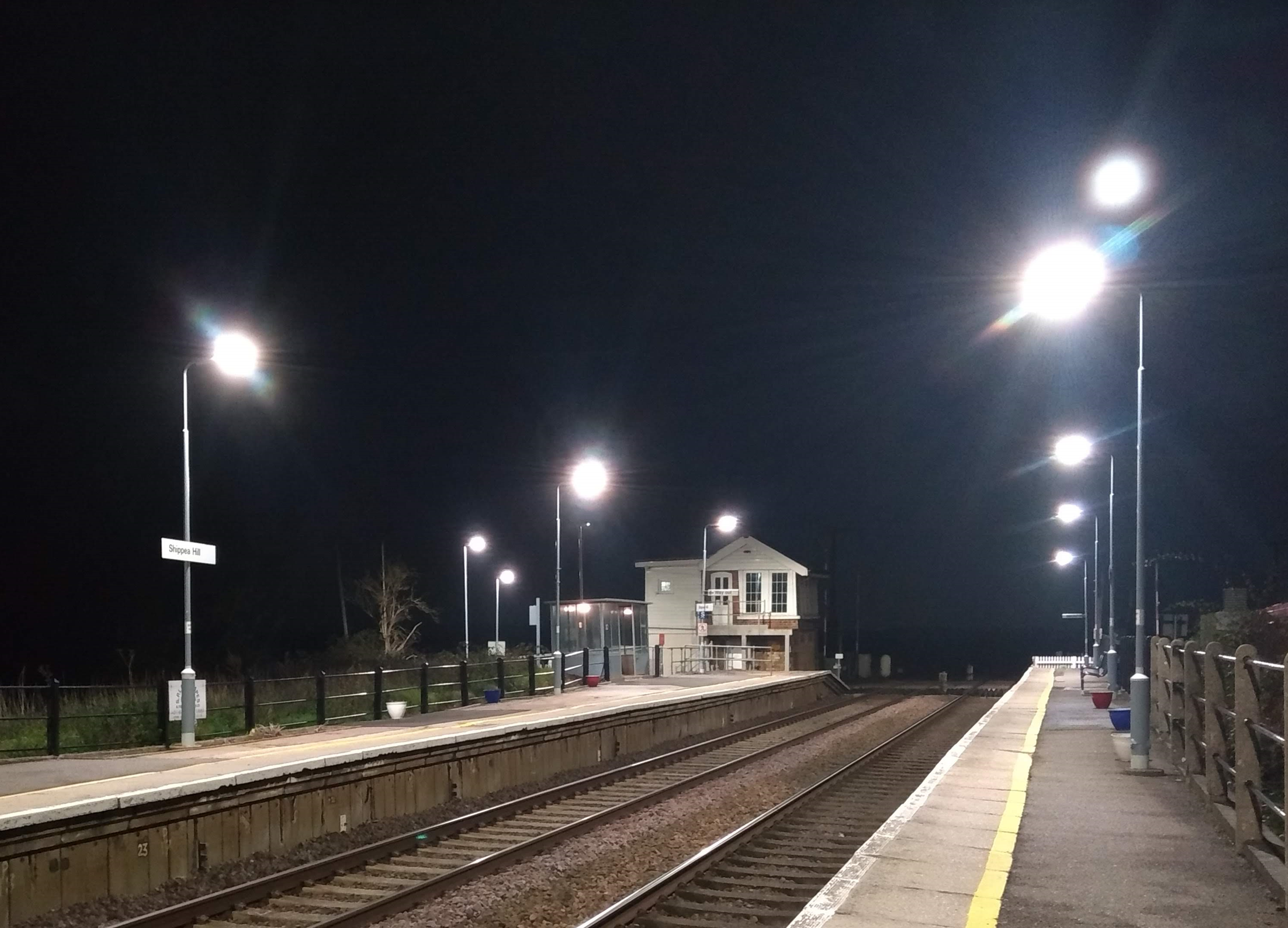On Saturday, I walked from Ely to Shippea Hill, and got the 19.27 train back. From a distance, you could see the station lights. The platform now has new 15 light poles. They have LED lights which are on continuously. There is a motion sensor so they are brighter when you are nearby.
There is also a new Passenger Information Screen
It does seem a little odd for their press release to be talking about a reduced carbon footprint, from continuous lighting at a station with six request stop trains each week towards Norwich and one a week towards Cambridge.
https://www.greateranglia.co.uk/abo...anglia-installs-led-lighting-more-80-stations
There is also a new Passenger Information Screen
It does seem a little odd for their press release to be talking about a reduced carbon footprint, from continuous lighting at a station with six request stop trains each week towards Norwich and one a week towards Cambridge.
https://www.greateranglia.co.uk/abo...anglia-installs-led-lighting-more-80-stations
Greater Anglia is installing LED lighting at stations across the network in a bid to tackle its carbon footprint and reduce the impact on the environment.
Since last December, lighting has been replaced at more than 80 stations across its network, as part of a £1.7m investment.
The new lighting, which has been installed on platforms, on concourses and in car parks, will make stations look and feel brighter and more pleasant.
Over the coming months, LED lighting will be installed at a further 24 stations.
Simone Bailey, Greater Anglia Asset Management Director, said: “We do all we can do reduce our impact on the environment and this is the latest scheme to tackle our carbon footprint.
“We aim to install LED lighting at all of the stations we manage. This will help save energy, create a more pleasant atmosphere for our customers and improve safety and security.”




